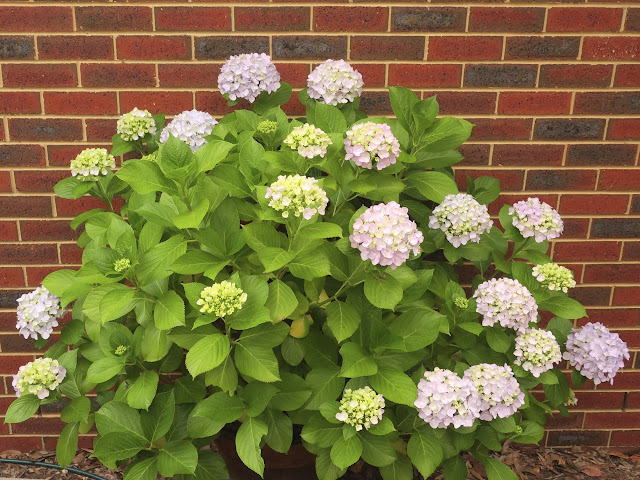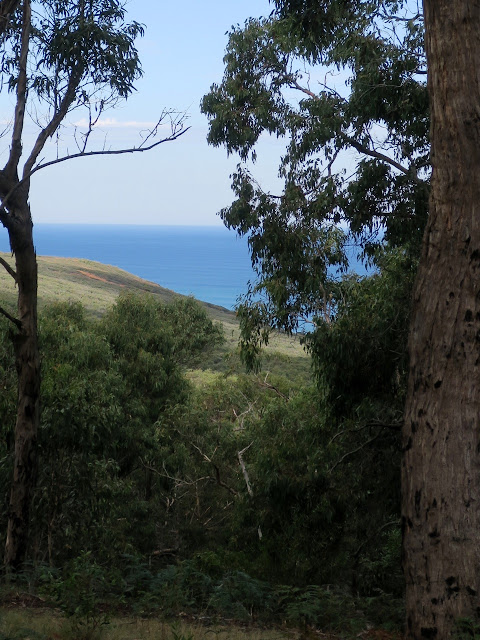The subject of my ikebana today is from a small tree that is endemic to Western Australia, Hakea laurina. It is a very tough plant and is used as a garden ornamental in other states of Australia, as well as overseas. I have vivid memories of this Hakea growing in the play-ground when I was in primary school. Its most distinctive aspect is its red globular flower. The flowers have yellow pistols that extend beyond the red globe of the flower. Hence the common name 'Pincushion Hakea'. It can grow into a small tree of 3 - 5 metres.
This specimen is about 3 metres tall and has had lower branches removed so that it has developed a single trunk.
When the flowers start to form from the bud the yellow pistols curve back into the flower. I have observed this characteristic in Banksias and Grevilleas which are in the same family, Proteaceae. In this photo you can see that the lance-shaped leaves are flat and have a dull surface. They are also quite firm and have a leathery feel.
Here is a close-up of a fully opened flower. To my child's eyes it looked like a bomb burst or a firework exploding. Above this flower is one that is still developing and which is not in sharp focus.
The seed pod is like a very woody nut and often in small clusters.
This one has opened and ejected its seed. I have always been fascinated by the very flat surfaces when these seed split open. They are so smooth they almost look like they have been polished.
Here is today's ikebana on the Sogetsu curriculum theme: Using only one kind of material. In spite of the fact that the leaves are fairly stiff, they actually have created a strong sense of flowing movement to the ikebana. Below is the arrangement in the niche in the living room.
The 'modern' ikebana vessel would have been made in the 1960s as there is a photo of one of the same design used by Norman Sparnon in his book: 'The Magic of Camelias' (page 134-5) that was published in 1968 *. The photo above was across a double page spread in the book. When scanned it resulted in the dark line through the middle of the image.
I acquired my vessel from one of Norman Sparnon's students, now a senior member of the Victorian Branch of the Sogetsu School.
25th April 2020
* 'The Magic of Camelias'. Ure Smith Pty. Ltd. Sydney 1968






































